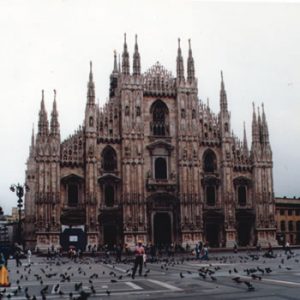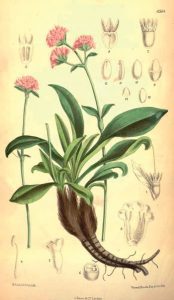Aspects of the Gospel
 Spikenard
Spikenard
“An ancient fragrant and costly ointment prepared mainly from a plant of the same name,” says my dictionary. Apparently it is also called muskroot which is the name of a flowering plant of the valerian family found originally in the Himalayan mountains. The rhizomes of spikenard are crushed and distilled into an amber coloured essential oil. It was also used as incense.
In the Synoptic Gospels story Jesus was dining at Bethany with Simon the Leper, who was no longer a leper having at some time been cured by Jesus. Was he one of the ten perhaps? Or one, and there must have been many, unrecorded until this story.
Bethany is perhaps better known as the home of his good friends Lazarus, Mary and Martha. And John names Mary as the woman with the precious oil. Mary appears in the story as only Mary can.
“And now Mary brought in a pound of pure spikenard oil, which was very precious, and poured it over Jesus’ feet, wiping His feet with her hair and the whole house was scented with the ointment.”
We can only speculate how Mary would have got this very expensive oil, perhaps a family treasure before she knew Jesus, tucked away somewhere until she saw a wonderful use for it. Mary is a complete contrast to Judas. “Why was this not sold and the money given to the poor?” But John writing now, knows Judas for what he was and he calls him a thief who would have used the money in the common purse for his own ends. Mary’s impulsive generosity was applauded by Jesus, “She is doing it for my burial.” No-one understood that, of course, not until afterwards.
No doubt the discussion went on with some applauding Mary and some agreeing with Judas. So it has been throughout the church’s history. In the twelfth century when mathematics and science were re-learned from the East, after the Crusades, the great Gothic cathedrals went up all over Europe. Some would have decried the huge cost when poverty was rife, the arduous work, perhaps even some lives lost when people were poor and sometimes starving. When visiting these places now, one can only marvel at the beauty of those buildings which rise up to the sky in praise of God. Would we have had it otherwise?
 Would we have been like Mary or Judas if we had been at that dinner at Simon the Leper’s house? This gospel story has been used as an excuse for excesses of all kinds, for great palaces to house kings and popes for the sale of indulgences, for ‘just wars’ so-called. But of course we have the other side, Francis of Assisi who embraced poverty, saints like Father Damian working among the lepers, Mother Teresa and her nuns and a myriad of modern saints who work and give their time and energy in the really poor countries of the world to help alleviate poverty, as well as all the organizations who make a difference.The great chasm between the rich and poor which is growing steadily in our own country is something to care about.
Would we have been like Mary or Judas if we had been at that dinner at Simon the Leper’s house? This gospel story has been used as an excuse for excesses of all kinds, for great palaces to house kings and popes for the sale of indulgences, for ‘just wars’ so-called. But of course we have the other side, Francis of Assisi who embraced poverty, saints like Father Damian working among the lepers, Mother Teresa and her nuns and a myriad of modern saints who work and give their time and energy in the really poor countries of the world to help alleviate poverty, as well as all the organizations who make a difference.The great chasm between the rich and poor which is growing steadily in our own country is something to care about.
There are modern instances to relate. There was a priest once working in Auckland in the forties and fifties who gave away everything that he had to people more needy than he. People would give him things and he would promptly give them away. Once I heard too of a bishop in the United States who sold his palace and went to live with all his parish priests in turn. That might have been a bit of a shock for them but they could have ended up enjoying themselves.
I would like to think that if Jesus were to come again we would find Him working amongst the poor but perhaps rather than that He is expecting us to do His work now.

 Entries(RSS)
Entries(RSS)